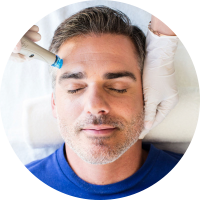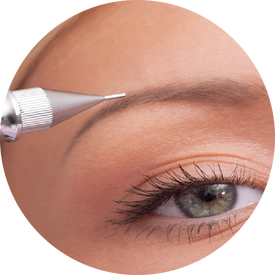CHEMICAL PEELs
|
Peels are designed to address the brightness of skin or more complex issues like melasma. Peels are not the scary archaic procedures they used to be. Think of chemical peels as similar to the burning of a field in spring. After it is charred, it grows back more lush and vibrant. In essence, that’s exactly what a chemical peel does for your skin. They are a way to deliver a controlled injury that induce the healing capabilities of your body and proliferate new skin cells.
|
Personally Customized PeeL
This service will include an assessment and I will design a peel specifically for your skin based on your desired outcomes.
Signature Retin-A Peel
This my best seller and you won’t find it anywhere else. I use a proprietary formula to customize the peel to meet your specific needs. I built it to handle almost all problems; texture, pigment, collagen production, pore cleansing and dead tissue removal. It's THE magic bullet. This procedure typically has 48 hours of down time and needs to be planned around the patient’s professional and social schedule.
The patients that work outside the home that want to peel over a weekend, usually have the procedure on a Wednesday afternoon. They look normal Thursday and Friday and have down time on Saturday and Sunday. Then Monday you’re fresh as a daisy.
The patients that work outside the home that want to peel over a weekend, usually have the procedure on a Wednesday afternoon. They look normal Thursday and Friday and have down time on Saturday and Sunday. Then Monday you’re fresh as a daisy.
Modified Jessners Peel
|
This is an entry level peel that boosts collagen, removes dead tissue and addresses light pigment and texture issues. It provides 70% of the strength of the Signature RetinA Peel without the down time. While I typically recommend the Signature RetinA Peel for it’s enhanced results, this is a great option for someone whose schedule can’t accommodate the 48 hours of down time.
|
Moderate TCA Peel (15%)
This Peel is designed to address deeper lines and wrinkles, pigmentation as well as skin rejuvenation and collagen production. This acid compound is an entirely different tool that targets textural and pigmentation irregularities in a more transformative way.
Intensive TCA Peel (20%)
LOCALIZED TCA EYE PEEL
This peel is designed to address crows feet, dark circles, bags under the eyes and aging eye issues. The application area is under the eye, eyelids up to the brow and feathered to outside of the orbital bone. Essentially think of the application area like a mask so that it fully covers the issue areas. This procedure isn’t typically recommended during the summer.
Treatments and Facials
Medical Microneedling
|
This procedure is ideal for acne scarring and severe wrinkling of the tissue. Using a SkinPen, this is a sterile field technique that creates controlled micro-injuries to stimulate the body’s natural wound healing process, while minimizing cellular damage. The result is remodeling of scar tissue, while keeping the overall structure of the skin intact. The benefit of this procedure is there is virtually no downtime.
|
HyrdaFacial
|
HydraFacial is for everyone. HydraFacial uses a unique, patented Vortex-Fusion delivery system to exfoliate, extract and hydrate skin. I love this procedure because it's like a teeth cleaning for your skin. It exfoliates, power washes, excavates debris from the pores and then replenishes all of your ‘florides’ for your skin to function at its optimal level. There is no downtime. You can reapply makeup, if necessary, but its preferred you wait 3-6 hours for full effect.
HydraFacial for the body is available upon request. |
Salicylic Acid Acne Treatment
This treatment is primarily for acne related problems and is ideal for teenagers or those affected by adult onset acne. It can reduce inflammation in active acne and prevent scarring by exfoliating the skin, unclogging pores, killing P-acne bacteria and preventing lesions.
IPL (Intense Pulsed Light)
|
IPL is ideal to treat mild or moderate pigment issues and broken facial capillaries. The procedure uses a hand held device that delivers a broad spectrum ray of light that penetrates the tissue to target specific structures, like melanin and oxy hemoglobin. The light heats the structures to destruction that is then absorbed by the body.
|









